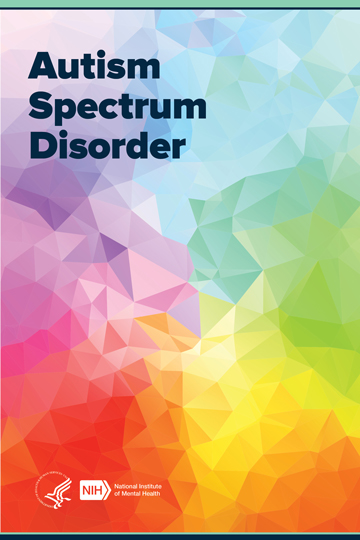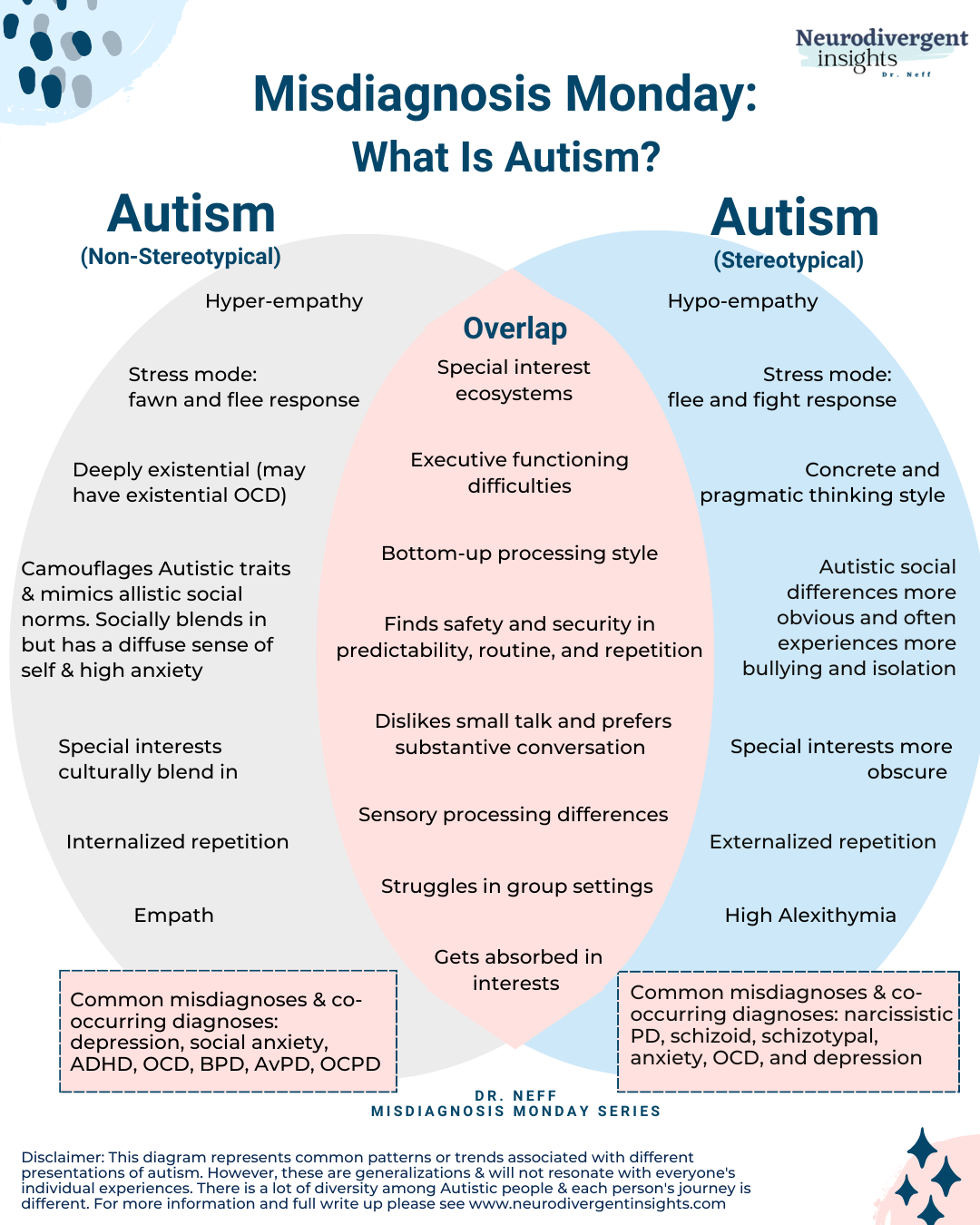To tell if someone is on the spectrum, look for social communication and behavioral differences. Here’s how to identify potential signs of ASD in individuals.
Autism Spectrum Disorder (ASD) is a complex developmental disorder that affects social communication and behavior. It’s a neurological condition that can impact a person’s ability to interact with others, handle sensory input, and engage in repetitive behaviors. Diagnosing ASD can be challenging because it varies widely from person to person.
However, knowing the signs and looking for clues can help identify it. Signs of ASD may include trouble with communication, challenges with social interaction, difficulty with changes in routine, sensory issues, and repetitive behaviors. Keep in mind that having one or more of these signs doesn’t necessarily mean a person is on the spectrum, but it might be worth investigating further.

Credit: directorsblog.nih.gov
What Is Autism?
Autism is a neurodevelopmental disorder that affects a person’s social skills, communication, and behavior. It is characterized by difficulties in social interaction, communication, and repetitive behaviors.
Symptoms Of Autism
The symptoms of autism can vary from person to person. People with autism may have trouble with:
- Non-verbal communication, such as facial expressions, eye contact, and body language
- Social interactions, such as making friends and understanding social norms
- Communicating with others, including both verbal and non-verbal communication
- Repetitive behaviors, such as lining up toys or repeating words or phrases
Types Of Autism
There are different types of autism, including:
| Type | Description |
|---|---|
| Autistic disorder | The classic form of autism, with significant language delays, social challenges, and unusual behaviors |
| Asperger’s syndrome | A high-functioning form of autism where language development and intelligence are normal or above average, but social interactions are difficult |
| Pervasive developmental disorder not otherwise specified (PDD-NOS) | A milder form of autism that does not fit the criteria for autistic disorder or Asperger’s syndrome |
If you suspect that someone may have autism, it is important to talk to a healthcare provider for a diagnosis. Early intervention and treatment can help improve outcomes for people with autism.

Credit: www.nimh.nih.gov
Understanding The Diagnostic Process
Early detection is crucial in identifying Autism Spectrum Disorder (ASD). Diagnosis of ASD involves evaluating three main areas of development: social communication skills, restrictive and repetitive behavior, and sensory processing difficulties. Children who display persistent deficits in these areas may undergo further testing to determine the presence of ASD. The diagnostic criteria for ASD has evolved over the years and is now reflected in the DSM-5 published by the American Psychiatric Association. It is important for parents to understand that a comprehensive evaluation by a clinical team, which may include a developmental pediatrician, psychologist, speech therapist, and occupational therapist, is necessary to accurately diagnose ASD. Early detection can lead to early intervention services, which can significantly improve outcomes for individuals on the spectrum.
| Social Communication Skills | Restrictive and Repetitive Behavior | Sensory Processing Difficulties |
|---|---|---|
| Difficulty responding to name Limited use of gestures Delayed speech development |
Repetitive body movements Resistance to change in routine Obsessive interests |
Hypersensitivity or hypo-sensitivity to sound, touch, taste, or smell Difficulty with motor coordination |
Misconceptions About Autism
Autism is a neurodevelopmental disorder that affects communication and social interaction skills. One common misconception about autism is that people on the spectrum are not intelligent. However, this is not true, as autistic people can have above-average intelligence and exceptional skills in specific areas.
Another misconception is that autistic people do not enjoy socializing and prefer to be alone. While it is true that social interactions can be challenging for some individuals, many autistic people enjoy socializing in their own way and have their own social circle.
It’s important to remember that autism is a spectrum, and individuals with autism can have very different experiences, strengths and challenges. It’s crucial to approach each individual with empathy and understanding, and to avoid making assumptions or stereotypes based on limited information.

Credit: neurodivergentinsights.com
Living With Autism
Autism is a condition that affects one in every hundred people. It is a neurodevelopmental disorder that impacts how a person communicates, processes information, and interacts with the world around them. Living with autism can be difficult, but with the right support, it is possible to manage the condition and lead a fulfilling life. Some key strategies for managing autism include developing routines and schedules, using visual aids to aid communication, and seeking professional support when needed. Additionally, while some people with autism struggle with empathy, many are highly empathetic individuals with unique perspectives on the world. It is important to be patient, understanding, and supportive of people on the spectrum, as they may struggle with the challenges of everyday life.
| Managing Autism |
|---|
| Developing routines and schedules |
| Using visual aids to aid communication |
| Seeking professional support when needed |
Empathy is an aspect of autism that is often misunderstood. While some people on the spectrum may struggle with empathizing with others, many are highly empathetic individuals with a different perspective on the world. It is important to recognize and value these unique perspectives, and to offer support and understanding to people living with autism. With the right strategies and support, it is possible to live a fulfilling life with autism and to thrive in a world that may not always understand or accommodate the needs of people on the spectrum.
The Role Of Caregivers
Caregivers play a crucial role in supporting individuals with autism. It is important to remember that autism affects each person differently, so a one-size-fits-all approach to caregiving is not appropriate. Instead, caregivers should strive to create individualized plans that can adapt to the changing needs of their loved ones.
One way to support individuals with autism is through the use of visual aids, such as calendars and pictures, to help them better understand routines and schedules. Communication is also key, and caregivers should be patient and encourage their loved ones to express their needs and feelings.
Resources for caregivers can be found through organizations such as Autism Speaks and the Autism Society of America. These resources can provide information on treatment options, support groups, and educational programs for individuals with autism and their caregivers.
| Resources for Caregivers | Description |
|---|---|
| Autism Speaks | A national advocacy organization dedicated to promoting solutions, across the spectrum and throughout the life span, for the needs of individuals with autism and their families through advocacy and support. |
| Autism Society of America | A grassroots organization dedicated to improving the lives of all affected by autism by promoting advocacy, education, public awareness, and support. |
Autism Research And Treatment
Autism Spectrum Disorder (ASD) is a neurodevelopmental disorder that affects social communication and interaction. It is estimated that 1 in 54 children are diagnosed with ASD. While the exact cause of ASD is unknown, recent advancements in autism research have identified potential genetic and environmental factors that may contribute to the development of ASD.
Recent Advancements In Autism Research
Recent research has shown that early intervention is crucial in improving outcomes for individuals with ASD. Studies have also focused on identifying biomarkers for early detection and developing personalized treatment plans. Additionally, research has shown the potential benefits of alternative therapies such as music, art, and animal-assisted therapies.
Effective Autism Therapies
There are various effective therapies available for individuals with ASD, including Applied Behavior Analysis (ABA) therapy, Speech and Language Therapy, and Occupational Therapy. These therapies aim to address specific challenges individuals with ASD may face, such as communication difficulties, sensory processing disorders, and behavior issues.
It is important to note that every individual with ASD is unique and requires a personalized approach to treatment. With continued research and advancements in autism treatment, individuals with ASD can lead fulfilling lives and reach their full potential.
The Stigma Surrounding Autism
The stigma surrounding autism has been prevalent for many years, with negative stereotypes about autism being perpetuated in the media and society. However, it is important to recognize the harm that these stereotypes can cause and to promote acceptance and understanding of individuals on the spectrum. Rather than focusing on limitations or deficits, it is essential to recognize the unique strengths and abilities that individuals with autism possess. By providing support and accommodations, individuals with autism can thrive and contribute positively to society. Additionally, it is important to recognize that autism is a spectrum, and no two individuals will present their symptoms in the same way. Therefore, it is crucial to approach each individual with an open mind and a willingness to learn about their unique experiences and needs.
Advocacy For Autism
Recognizing autism in others can be challenging, as it is often an invisible condition. However, behaviors such as difficulty with social cues, repetitive behaviors, and sensory sensitivities can be indicators that someone is on the spectrum. It’s important to approach individuals with autism with patience and understanding to help them feel included and supported.
If you’re looking for ways to help raise awareness for autism, there are a variety of advocacy organizations out there. These organizations are dedicated to promoting autism acceptance, understanding, and inclusion, as well as providing support and resources for those on the spectrum and their families. Some examples of such organizations include the Autism Society of America, the National Autism Association, and Autism Speaks. You can get involved with these organizations and others by volunteering, donating, participating in events, and spreading the word about autism. By doing so, you can help make the world a more inclusive and accepting place for those with autism.Conclusion
In closing, understanding the signs of autism spectrum disorder can help improve communication, foster empathy, and build stronger relationships between individuals and their loved ones. While there is no single definitive test to diagnose ASD, recognizing common traits can be a vital first step in seeking professional help and support.
Remember, everyone’s journey is unique, and it’s crucial to approach individuals on the spectrum with respect and understanding. By educating ourselves and others, we can create a more inclusive and compassionate society for everyone.